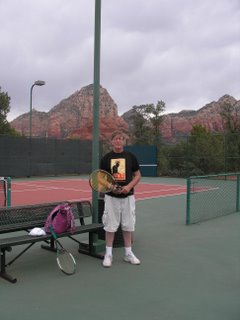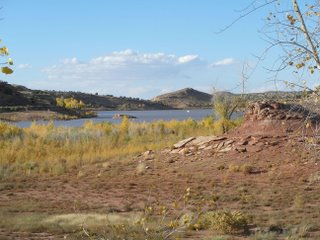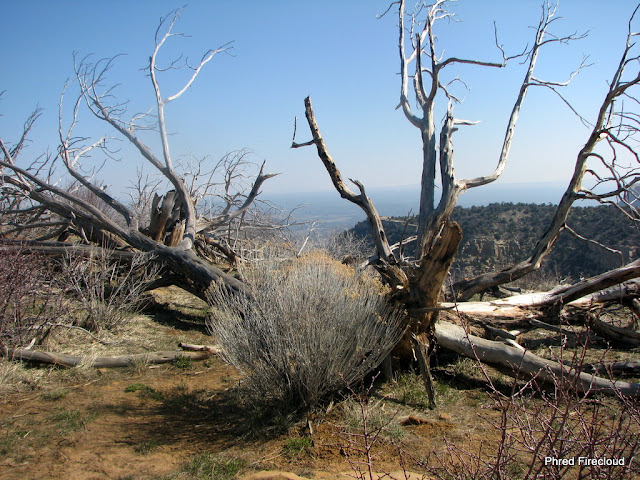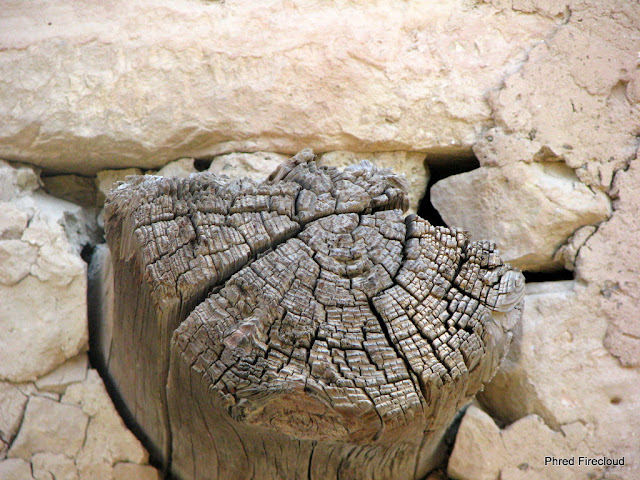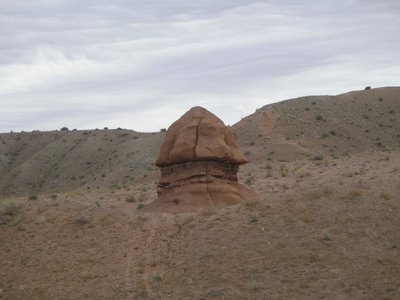Sedona is picturesque. The town is surrounded by towering spires of red rock. It's full of artists, shops and galleries where photographs, paintings, pottery and silver and turquoise jewelry are sold.
We ride the motorbike up to Slide Rock State Park in the morning. The park used to be an apple orchard. The original barns, houses and equipment are on display, including an old waterwheel electricity generator. Mr Pendley's 1912 apple orchard has now been turned into a state park. We self-register and explore the park.
Pendley dug a two-mile system of flumes and tunnels up the mountain to deliver water to the orchard, which is about 100 feet above the adjacent river. This effort took him two years and appeared to be back-breaking work. Red Delicious apples seem to grow best here.
Tennis scores on the municipal court for today are 6-1, 6-2. I lose both
sets. I'm obviously distracted by the surrounding scenery.
Later, a five-mile evening trip for groceries on the motorbike in the dark, rain and cold in heavy four-lane traffic adds some spice to the day. I fill my backpack with wine, whole-grain bread, eggs and sliced turkey.
The weather has been near or below freezing in the evenings for the last
week. I have a dawn balloon trip over the red rock spires of Sedona
booked in the morning to surprise Mrs Phred for her birthday present.


